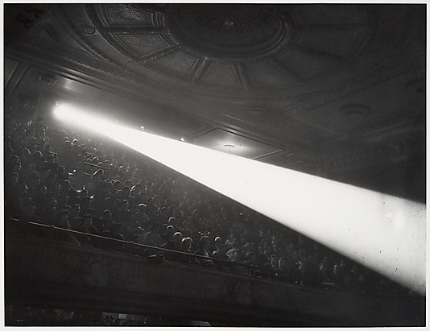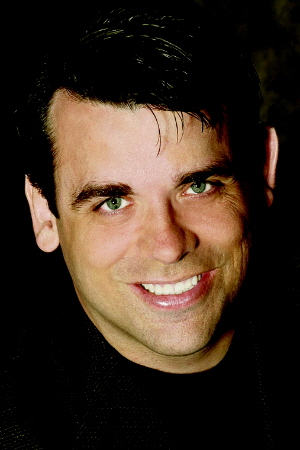 PART TWO
PART TWO
(To read part one, click here,)
By Bill Hirschman
LOOK, I MADE A HAT: COPING
South Florida stages may be dark, their front doors locked, but few companies and venues are dormant. There is no intermission. Executives down to low-level staffers from the largest venues to the smallest troupes are busy working, mostly from home.
Most are studying operating budgets, looking for nonessential items that people won’t notice if they are cut. For instance, the Maltz Jupiter Theatre might not publish its sophisticated slick and informative supplemental background magazine for each production as it had in the past season.
But highly business-conscious operations in Hurricane Country like the Broward Center, Maltz, Palm Beach Dramaworks and the Kravis Center in West Palm Beach have been thinking for years about dealing with unexpected risks. “I’ve always had in the back of my mind like what would be the contingency plan?” said Andrew Kato, CEO and producing artistic director at the Maltz Jupiter Theatre.

Judith Mitchell
The Kravis’ CEO Judith Mitchell added, “We’re in a fortunate position in that we’ve sort of been through this before in our approach to trimming expenses. But as an overall administrative and management group, we’ve always run very lean. I don’t have a lot of fat to cut.”
Her company has cut all of its summer activity plus its considerable and expensive educational programs for children and adults. “None of those things are revenue generating for us. That all costs money…. Those are expense items. Those are things we do in this community because it’s part of our mission,” Mitchell said.
Marilynn Wick, founder of the Wick Theatre and Costume Museum, is microscopically examining which debtors have been behind in payments, asking her own vendors to renegotiate bills, and seeking better terms on the Wick’s loans and rental payments. Imagination and good will are key: The Wick rented 14 cars from Enterprise for cast members for the imminent A Chorus Line, many of them from New York. The rental car company has agreed to partial payment with an advertisement in upcoming programs as “a partner” supporting the arts.
Many of the operations, especially the presenting houses, are committed to trying to keep their full-time staffs intact and paid as long as possible. But some companies like Actors’ Playhouse had to furlough construction and production teams because there simply is no work for them to do. Executive Producing Director Barbara Stein is waiting for funds from an approved Small Business Administration loan to bring some people back.
The Arsht, with 100 full-time employees, plans “to keep them employed and financially whole for as long as possible” including benefits. The Kravis has furloughed its part-time staff which would have occurred normally with its reduced summer schedule. But the rest of the staff is busy off-site, sometimes reassigned to different duties, as well as a skeleton crew on campus to keep the facility in good shape, Mitchell said.
“When we are able to resume operation … you want to have the people who are trained and experienced and able to do that in a way that is a part of that recovery and healing,” she said. “I can only assure you that the last thing to go will be our people. We’re trying to trim and cut everything that we can, but… our people are our most important asset.”
The uncertainty affects operations with capital plans. For instance, the Maltz Jupiter Theatre, deep into a multi-stage multi-million-dollar expansion now plans to postpone the next phase for a year unless the situation changes soon, said Kato. The original plan had been to seek imaginative off-site venues (“Damn Yankees performed in a baseball stadium”) while major work was done to the complex, but that has been put on hold.
Most executives like Island City Stage’s Martin Childers are busy applying for grants. Fortunately, the Miami-Dade County Department of Cultural Affairs is ruling everyone’s current grants as satisfied. “We argue that you’ve done enough with your season to satisfy our requirements for your grant and … we’re satisfied that there’s enough public benefit that has occurred,” said department director Michael Spring.
That department is emailing a list of grant opportunities to artists in every genre. Arts leaders were glad that the National Endowment for the Arts and other groups received money in the recent stimulus package because of both the need to support the arts and also as a recognition that the arts are a major economic driver. But Spring notes that “it doesn’t even begin to scratch the surface of what’s going to be needed to address the real need.” He encourages artists and companies to apply for grants regardless of their likelihood of getting them as a way to show government and other funders the scope and depth of the actual need.
Dealing with the immediate situation is crucial, leaders said, but also is planning long-term despite the lack of knowable parameters.
Kelley Shanley, president and CEO of the Fort Lauderdale presenting/producing Broward Center, wrote in an email, “We’ve learned a lot over the years about operating through mini-crises like hurricanes (I can’t believe I just referred to a hurricane as a ‘mini’-crisis). We were able to apply many of those procedures to achieve the ‘controlled crash landing’ we just performed. But everything now is on a larger scale and a more truncated timeline. Preserving resources through an extended closing period is the focus right now.
“We don’t know how long it will be. But we know we need to think through the next 12-18 months, not just the next few months. We will be the last in line as the restrictions on gatherings are dialed back. And at that point we could have an extended period of time where the economy is still reeling, arts organizations will be in various degrees of instability, and the touring industry will be trying to get its footing…. There’s lots of disruption to digest and to plan for – but we’re already in planning mode.”
CONNECT, GEORGE, CONNECT: REACHING OUT
Predominant in the minds of many company leaders is maintaining a connection with the patrons and their artists.
Most have sent out an email, sometimes multiple ones, to subscribers and colleagues asking everyone to stay safe and pledging that they will be back “on the other side of this.”
Palm Beach Dramaworks and the Kravis staffs have been making literally hundreds and hundreds of personal one-on-one phone calls to donors, season subscribers, volunteers and others. But it’s not to talk about theater at all unless the other party brings it up, but just to ask on a human level how they are coping.

William Hayes
“I’m not calling for it to be about the theater because we want this time right now to be about understanding and feeling what they are feeling. Are you okay? Do you need a friendly voice?” said Dramaworks Producing Artistic Director William Hayes who makes calls himself daily. “We’re not (doing) it because we expect anything in return. But I would wager when it’s time to reopen, they’ll probably be there for us, too.”
Technology has made reaching out far different than in other emergencies. Reaching out in 2020 includes posting You Tube promotional videos such as how-we-did-this features shot to publicize previous productions. Companies such as Miami New Drama are creating or expanding existing online master classes and background lectures on upcoming shows for professionals, amateurs and just fans. Theatre Lab, the resident professional company at Florida Atlantic University, is committed to continuing its school programming that is a significant portion of its mission. Actors’ Playhouse will conduct auditions for its Young Talent, Big Dreams program by viewing video submissions.
But some companies are going further to “take this unfortunate situation and try to figure out how to turn it into opportunities for our organization… to engage people even more,” said Hayes. One plan on his virtual drawing board concerns its continuing development of Michael McKeever’s play about the people who hid the Anne Frank family, The People Downstairs. A previously slated workshop will likely be done online, but Hayes is investigating allowing patrons to watch the sessions. “They won’t be able to vocally participate, but they get actively involved in the process,” Hayes said.
Some of the larger operations are creating or maintaining significantly broad efforts with several components such as the Broward Center’s free online “Classes to Go, and providing online arts- related content to Broward County schools, and tips for parents to sensory-friendly opportunities – their list is long and varied.
Similarly, the Arsht@Home project works with artists to create original hyperlocal content aimed at all age levels and offering it free on the center’s website and social media channels. Other examples include instructional videos featuring at-home arts activities; human resources staff offering one-on-one resume and interview workshops for artists; living room performances by local singers and musicians, and theatrical performances from resident companies based at the Arsht like City Theatre and Zoetic Stage.
Some efforts are unusually inventive: The Wick’s Costume World staff has constructed more than 300 masks that are being mailed out upon request to its theater subscribers.
Of course, there are livestreaming productions and Zoom readings. The former was exemplified by the Maltz Jupiter Theatre filming the first preview of How To Succeed In Business Without Really Trying and sending a coded access instructions to people who had bought tickets.
The latter was illustrated om Facebook by Theatre Lab’s Online Original Monologue Festival on March 29 in which 37 actors performed monologues from their bedrooms written that week by local playwrights. The fundraiser for the participants, not the theatre, was seen by at least 2,600 people and raised about $4,200 for 21 artists plus contributions to the South Florida Theatre League. A second one is being planned for April 27 to benefit behind-the-scenes staffers.
No one interviewed in the local theater community disdained these efforts, but they are deeply divided about whether this is or should be encouraged as the future, let alone the intermittent survival of the art form. (Florida Theater on Stage will have a much longer look at this in a story later this month).
“Reaching out” does not mean hitting up donors for contributions, underscored nearly everyone interviewed, although nearly everyone is urging ticket holders to take a credit for future shows or make their purchase a tax-deductible donation rather than seek refunds.

Michael McKeever
A few companies shyly have their hand out or are rebuffing refunds which concerns some colleagues. McKeever, general manager of Zoetic Stage, said, “You’re talking to people whose 401Ks and stock market savings are going out the window. I’m talking about people who can’t find toilet paper. Do you really think donating to your theater company is top of their mind right now? Do we really think Zoetic Stage during this time is a priority? No, toilet paper, Lysol, that’s a priority right now.”
Happily, patrons’ reactions are encouraging for the most part, some theaters report.
At the Kravis, “our guests are still renewing subscriptions for next season, and we’ve received an outpouring of positivity and support from our community,” Mitchell said.
Island City Stage has had very few patrons ask for refunds. The Wick, which had 3,700 subscribers this season and hoped for 4,000 next season, is only 1,000 short of the current numbers and estimate they will only end up 300 short of this year’s figures, Marilynn Wick said.

Andrew Kato
But some houses are worried, Kato noted, “because people are fearful. They don’t want to put their money in something that they don’t know that’s going to be there or not.”
Actors’ Playhouse’s administrators had been celebrating a 35 percent hike in the subscriptions for the 2019-2020 season. But the current subscription effort suddenly dried up: It is running about half the number of subscriptions than the same time last year.
Still, Miami-Dade County is home to “some very progressive donors out there,” who are already being receptive to pleas for help, Spring said. “A lot of donors are taking the high road and saying our donation will ensure that this organization remains viable. And the same thing goes for ticket holders.”
WITH SO LITTLE TO BE SURE OF: LOOKING AHEAD
Precisely what “theater” will look like six months or a year from now, how to make the most of that opportunity and proactively shape it, is also on the agendas.
“Crisis has a way of forcing us to rethink, reshape and be extraordinarily creative,” wrote Arsht Center President and CEO Johann Zietsman. “Those lessons and imaginative ways of thinking can serve us well even after all this has passed. Crisis also has a way of highlighting hidden opportunities. We are having to think about ‘Business not as usual’ in creative ways. Some societal changes are already happening, and this will accelerate some aspects of our ever-increasing virtual life. But we have to remember that human beings are social animals, and the need to physically gather to enjoy a shared experience will always be part of our DNA. This is a moment to reflect on what our shared experiences in the future might look like – to meet the post-COVID community where they are.”
The brainstorming ranges from finances to the experience in the auditorium.
“The risk of presenting when we re-open will be a real concern,” Shanley wrote. “Under the best economic circumstances, presenters run the risk of losing money on performances. In this case, we will be facing an economy in recession, and lingering concerns among some people about attending performances. At the same time there will be considerable demand built up from a long period without shows. It’s hard to tell what the net demand will be, but it is a very real concern.”
The physical environment itself will be key in answering that. “Obviously, as we look at the future, a clean, hygienic and safe environment is going to be very important to anyone attending a performance,” Shanley wrote. “Standards are being set all around us now and theaters will need to adopt a protocol that helps prevent the spread until a vaccine is available, and probably beyond.”
Attendance might be capped to ensure that patrons can sit a few feet from each other, said Slow Burn Theatre co-founder, director and choreographer Patrick Fitzwater. Disinfectant dispensers will be ubiquitous. Masks will be offered at the door of the Wick. More matinees are likely for older audiences who traditionally have been reluctant to drive at night
“Are we going to live in fear?” Fitzwater asked. “Every time someone coughs when you’re in the theater, it’s going to take you out of the moment.”
The Arsht’s Zietsman agreed: “We know it will be a slow, sensitive process to re-establish our collective confidence in physical gatherings, and we will need to be very sensitive to this new dynamic.”
Several people said it was too early to identify many lessons or see much yet as a wake-up call, but some issues landed with a few professionals, especially the obvious value of having developed reserves, said Andy Rogow, artistic director of Island City Stage whose board members had started such a fund.
Several theater managers also complained that while the unions are struggling to adjust to the challenges along with everyone else, they said not-for-attribution that the unions are not being as flexible to work with as they hoped, especially about enabling non-traditional projects – an issue they said clearly had been on the horizon for some time.
Some, like Hayes, see this hiatus as time to seriously rethink the Shape of Theater: Unswervingly committed to live performances inside a traditional venue, but thinking about other paradigms. One might be a national umbrella for regional theaters to sell tickets around the country to their own live streamed performances of professionally-filmed editions of their work, much as the National Theatre does in Great Britain.
If there is optimism about the uncertain future, interviewee after interviewee consistently affirmed that the physical separation and people’s current immersion in whatever art they can access from their homes has underscored the innate need of people to gather communally for live storytelling. It’s a hunger their patrons keep telling them about, one that theaters feel requires them to survive. Mitchell termed it “a role for us to play as being somewhat of a beacon for the community overall health and recovery.”
Shanley wrote, “I think the most remarkable discovery is the vital role that art is playing in the lives of people right now…. When you are afraid and concerned for the future, when you strip us down to our humanity, the basics, art and people connect us. They are what sustain us, inspire us… give us hope….The performing arts are creating powerful emotional connections at a time when they may be needed most.”
Taking it a step further, Kato said, “In times of darkness and uncertainty, the arts help us to reflect on our humanity. It shines a light on where we come from and where to go. It illuminates our struggles in times of adversity and our determination and grit to get to the other side… allowing us to learn about ourselves.”
In the novel Lost Horizon, the monks in Shangri-La sought to preserve art and culture despite an impending global apocalypse, so those gifts would be safely harbored until peace returned.
Kato unintentionally echoed James Hilton when he concluded, “When this is over, people are going to want to heal, and art is the best place, the best way. …. So we will be here when people are ready.”
(To read part one of this series, click here.)









 A PaperStreet Web Design
A PaperStreet Web Design
